by Mike O'Mara | Oct 22, 2019 | Carbon Monoxide
The CSIA recommends investing in annual chimney inspections, regular sweepings, and annual dryer vent cleanings. This maintenance gives sweeps the opportunity to check things over, clear out any buildup, and spot any damages or potential threats. Just one simple phone call to a certified technician could save you a lot of time, stress, and hassle this holiday season!
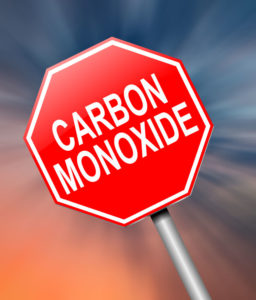 One major reason these practices are so encouraged is due to the threat of carbon monoxide poisoning. Clogged dryer vents can cause this gas to back up into your home, and it could easily find its way in through gaps and holes in your chimney, as well. Invest in the care you need now, so you aren’t left facing scary scenarios this fall and winter. The certified experts at Weststar Chimney Sweeps are here to help you every step of the way!
One major reason these practices are so encouraged is due to the threat of carbon monoxide poisoning. Clogged dryer vents can cause this gas to back up into your home, and it could easily find its way in through gaps and holes in your chimney, as well. Invest in the care you need now, so you aren’t left facing scary scenarios this fall and winter. The certified experts at Weststar Chimney Sweeps are here to help you every step of the way!
Carbon Monoxide Defined
So, what is carbon monoxide exactly? Most know that it is dangerous and needs to be avoided, but few actually know much about it. Well, any time a fossil fuel is burned carbon monoxide is produced. This goes for cars, stoves, dryers, grills, and more. Unfortunately, carbon monoxide (or CO2) is extremely harmful to one’s health, and it reportedly leads to hundreds of deaths every single year.
How Can I Detect It?
Once homeowners realize how deadly carbon monoxide truly can be, the next thing they want to know is what signs to look out for regarding its presence. Well, unfortunately, this gas is both colorless and odorless making it virtually impossible to detect – that’s what makes it such a threat! Because of this, purchasing carbon monoxide detectors is a must. Buy multiple devices and install them on every level of the home to ensure you’re alerted at the first sign of trouble.
Physical Symptoms
It’s also important to be aware of the physical symptoms that occur after inhalation. If you suspect a leak in your home and notice any of the following symptoms in you or family members, leave the area and seek medical attention immediately: dizziness, nausea, shortness of breath, headaches, confusion, weakness, or other flu-like symptoms. Unfortunately, if one is sleeping or intoxicated, symptoms will not typically be noticed in time – another reason why carbon monoxide detectors are so important!
Invest In Professional Care For The Protection You Deserve
An annual inspection could be the difference between facing a leak or not, so don’t put off the care you deserve any longer. It’s vital to find any damages or signs of danger well before putting your fireplace to use, and our experienced team would be proud to set you up right this fall and winter. This is one investment you won’t regret making. Stay safer by reaching out today to set up your appointment!
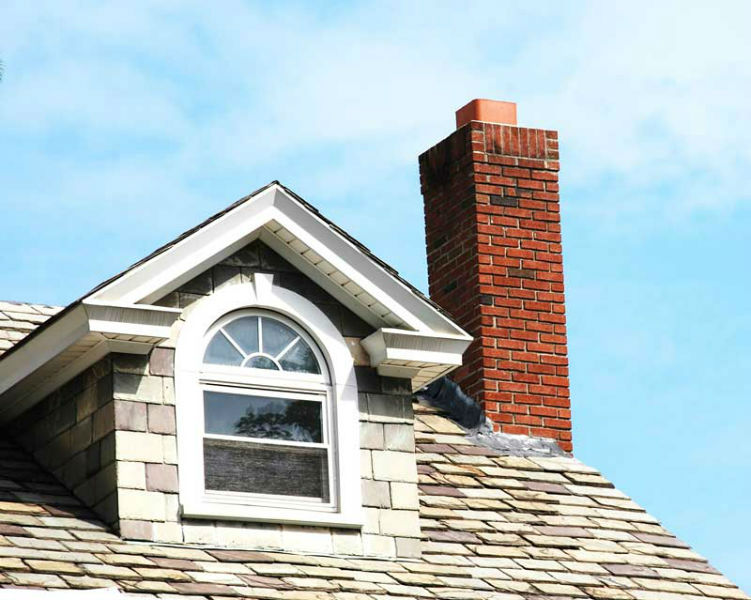
by Mike O'Mara | Jan 31, 2016 | Chimney Inspections
In order for your fireplace and chimney to work efficiently and safely, you must take care of a few routine maintenance tasks. Included in these tasks is a chimney inspection performed by a certified chimney professional. Scheduling this service at the start of the year allows you to enjoy your fireplace without worrying about potential problems all year long. Weststar Chimney Sweeps is proud to offer chimney inspection services, and you can trust our chimney technicians to do the best job possible. All of our technicians have been trained and certified by the Chimney Safety Institute of America (CSIA) to properly inspect chimneys. We would like to tell you why it is so important to have your chimney professionally inspected once a year.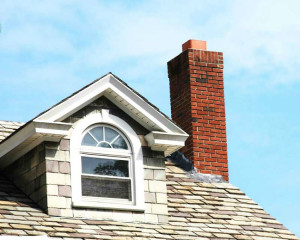
Reduce the Risk of Chimney Fires
One of the things Weststar Chimney Sweeps looks for when inspecting chimneys is the amount of creosote deposits that have accumulated on the inner walls of your chimney. A large amount of creosote can be very dangerous as it is an extremely flammable compound. The CSIA has named creosote as the leading cause of chimney fires because it can easily ignite if the internal temperature of your chimney gets hot enough. Once we know how much creosote is inside your chimney, we can then make the best preparations for removing it by sweeping your chimney.
Prevent Carbon Monoxide Poisoning
Our CSIA-certified chimney sweeps will also check to see if anything like leaves, bricks, or other debris is blocking the flue of your chimney. When your flue is blocked by debris, it can cause the toxic gas carbon monoxide to be forced back into your home. Without a carbon monoxide detector alarm, you could be breathing in carbon monoxide without even knowing it since it is odorless and tasteless. If we do find a blockage, we will remove the debris to make your chimney vent properly and safely.
Prolong the Life of Your Chimney
During our inspection, we will be looking for damage that could cause your chimney to be unsafe to use. Our CSIA-certified sweeps will closely examine the condition of the bricks and mortar of your chimney, as well as its components, including the liner and damper. If we find any type of damage, we will document it and give you photographs of the damage, along with a written inspection report. We can also make recommendations for repairing any damage we find.
Start off the new year by making sure your chimney is in its best condition. Contact us at Weststar Chimney Sweeps to schedule an appointment for our certified chimney inspection services.
by Mike O'Mara | Nov 15, 2014 | Chimney Maintenance
The thought of the threat of carbon monoxide poisoning happening in your home is very frightening; however, neglecting regular chimney maintenance can result in carbon monoxide leaking into your home without you even knowing it. Odorless, tasteless, and invisible, this toxic gas can become trapped within your house. If you do not have a carbon monoxide alarm installed to alert you of this danger, you and your family could get very sick or even die from continuously inhaling this poisonous gas. Another way to be safe from the dangers of carbon monoxide poisoning is to schedule an annual chimney sweeping and inspection from Weststar Chimney Sweeps. This step can stop this gas from entering your home in the first place. We would like to inform you about these dangers so that you can best protect yourself and your family.
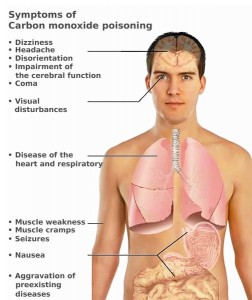
How Does Carbon Monoxide Affect My Body?
When you breathe in carbon monoxide, the poisonous gas enters your bloodstream and how your blood treats this gas is the true danger. Hemoglobin, a protein in your blood, will always choose to pick up and carry the carbon monoxide and to ignore oxygen. Of course, we need oxygen flowing through our blood to keep our cells from suffocating. The amount of damage caused depends on how long and intense you are exposed to inhaling carbon monoxide, which makes detecting and preventing its presence so crucial.
How Common Are Deaths and Illnesses Due to Carbon Monoxide Poisoning?
According to the Chimney Safety Institute of America (CSIA), at least 200 people in the U.S. are killed every year from carbon monoxide poisoning caused by venting problems in their heating appliance systems. Approximately 10,000 cases of sickness related to carbon monoxide are recorded in hospitals each year as well.
What are the Side-Effects and Symptoms of Carbon Monoxide Poisoning?
Side-effects of low-level exposure can include permanent brain and other organ damage. Unfortunately, the symptoms of low-level poisoning are very similar to those of the common cold: headache, dizziness, fatigue, and nausea. This can cause many misdiagnoses of carbon monoxide poisoning, which prolongs the exposure. If these symptoms do not go away, be persistent with your doctor and ask for a blood test to check for levels of this toxic gas. The sooner high levels are found, the sooner life-saving treatment can begin. High-level exposure to carbon monoxide can cause death.
How Does This Gas Come Into My House?
Poor ventilation is the primary cause of carbon monoxide coming into your home; however, the factors behind the venting problems include a damaged or missing chimney flue liner, large deposits of creosote, debris clogging the passageway, and nesting from birds or other animals blocking the flue.
How Can I Prevent Carbon Monoxide from Entering My Home?
All of the factors behind chimney venting problems can be corrected with an annual chimney sweeping and inspection from Weststar Chimney Sweeps. With cases of carbon monoxide-related health issues on the rise, our CSIA-certified chimney sweeps are extra careful to clean out any blockages, check flue liners for cracks and gaps, and replace a deteriorated chimney liner to protect you from the dangers of carbon monoxide poisoning.
If you have not scheduled your annual chimney sweeping and inspection this year, contact Weststar Chimney Sweeps today. Our staff will arrange a chimney sweep visit to your home as soon as possible to prevent carbon monoxide from entering your house.
by Mike O'Mara | Apr 30, 2014 | Chimney Maintenance
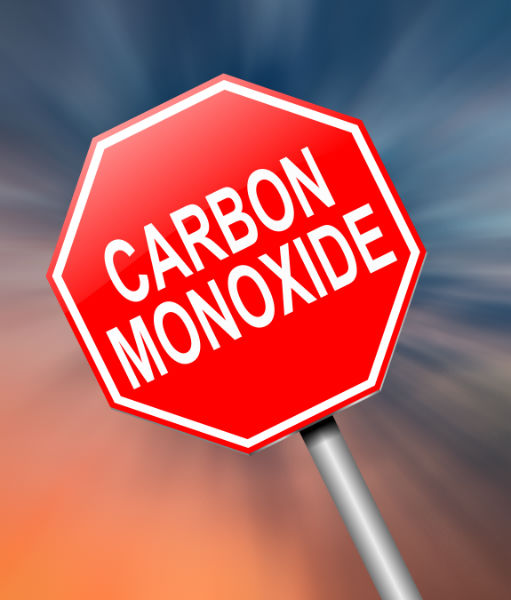
You won’t know it’s there until it strikes! Avoid CO poisoning through proper chimney care and maintenance.
When you are using your fireplace, you probably give little thought to the dangers of carbon monoxide poisoning; however, the Chimney Safety Institute of America states that every year over 200 people in the United States die from carbon monoxide poisoning due to the toxic gas entering their homes due to venting problems or leaks in their heating or chimney system. Additionally, 10,000 cases of illnesses due to carbon monoxide poisoning are reported every year. Fortunately, proper maintenance of your chimney, including an annual chimney sweep and inspection from a CSIA-certified chimney sweeping company like Weststar Chimney Sweeps, can prevent any possible carbon monoxide poisoning incidents from occurring in your home.
What does carbon monoxide do to you?
Quite simply, too much carbon monoxide in your bloodstream will kill you, and low levels of exposure to carbon monoxide over a period of time can cause many health problems. Unfortunately, when carbon monoxide is in the air, the protein hemoglobin in your blood would rather latch on to carbon monoxide and ignore life-giving oxygen. Because of this, your body will replace oxygen with carbon monoxide, and this causes greater or lesser levels of your cells suffocating, depending on the duration and intensity of the exposure to carbon monoxide. Low-level exposure to carbon dioxide includes serious side effects like permanent organ and brain damage. The elderly, infants, and people with breathing issues are in more danger to carbon monoxide exposure as their immune systems are compromised. Symptoms of carbon monoxide poisoning are similar to the common cold and flu, so it can take some time to diagnose the true problem. If you continue to suffer from headaches, fatigue, or even depression, ask your doctor to check your blood levels of carbon monoxide.
How does carbon monoxide form in my chimney?
A by-product of combustion, carbon monoxide can be found in both gas and wood-burning fireplaces, stoves, and furnaces. If the combustion process is incomplete, more carbon dioxide is formed. Restricted air flow (closed fireplace doors and an unopened damper) is a cause of incomplete combustion as not enough oxygen is able to get in to burn the fuel completely.
How does carbon monoxide get into my house from my chimney?
Several factors lead to the toxic gas leaking into your home. A damaged or deteriorated flue liner allows carbon monoxide to seep through its cracks. Other factors that cause carbon monoxide to enter your home are debris clogs, soot build-up, and animal or birds nests obstructing the chimney flue.
How do I prevent carbon monoxide from entering my house?
The best prevention against carbon monoxide leaks is an annual chimney sweeping and inspection from a CSIA-certified company like Weststar Chimney Sweeps. We will ensure your venting system and flue liner are in good shape, and if not, we provide chimney repair services to fine-tune your chimney so that it works efficiently and safely.
If you have any more questions about the dangers of carbon monoxide, contact Weststar Chimney Sweeps, and our staff will be happy to answer them as well as schedule a chimney sweeping and inspection to ensure your home is carbon monoxide-free.
 One major reason these practices are so encouraged is due to the threat of carbon monoxide poisoning. Clogged dryer vents can cause this gas to back up into your home, and it could easily find its way in through gaps and holes in your chimney, as well. Invest in the care you need now, so you aren’t left facing scary scenarios this fall and winter. The certified experts at Weststar Chimney Sweeps are here to help you every step of the way!
One major reason these practices are so encouraged is due to the threat of carbon monoxide poisoning. Clogged dryer vents can cause this gas to back up into your home, and it could easily find its way in through gaps and holes in your chimney, as well. Invest in the care you need now, so you aren’t left facing scary scenarios this fall and winter. The certified experts at Weststar Chimney Sweeps are here to help you every step of the way!



